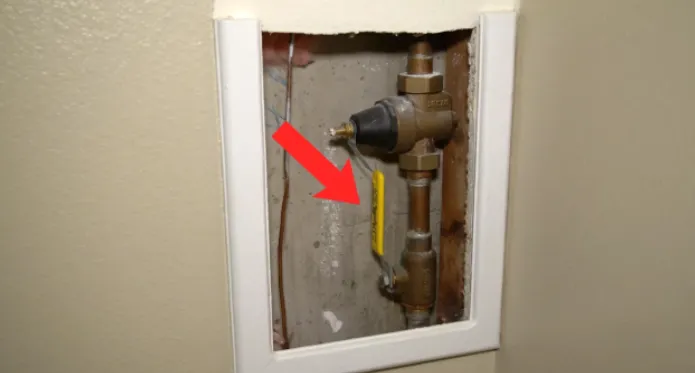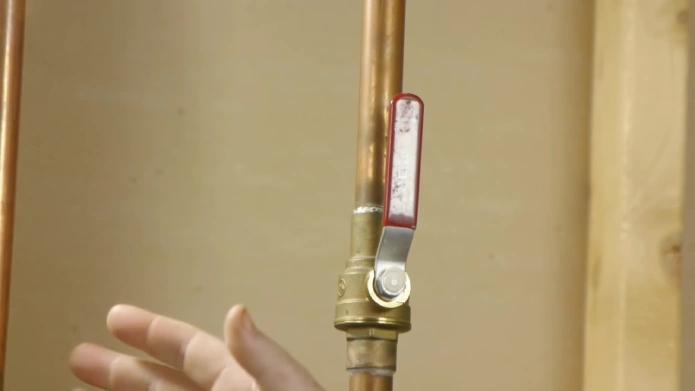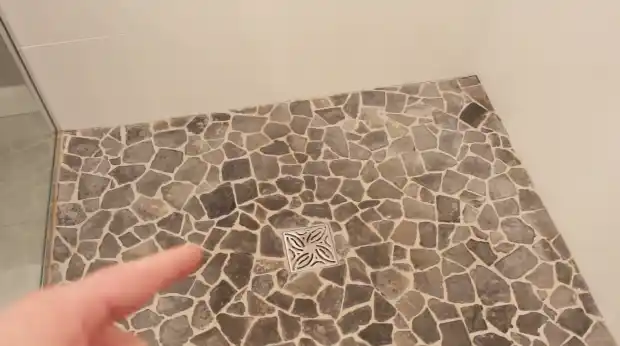Last Updated on April 3, 2023
Homeownership involves being prepared to tackle emergencies, and that includes knowing when and how to turn off the main water valve in a pinch. Understanding this process can help prevent costly damage, so it’s worth taking some time out of your day to familiarize yourself with it.
Questions arise when it comes to the notion of shutting off your main water valve. Before we delve into the answer, let’s first understand why this is an important consideration.
In the event of a suspected leak, promptly turning off your main water valve is advisable. However, if you’re dealing with just an obstructed drainpipe, it’s usually not necessary to shut down the entire system.
Explore the conditions that warrant turning off the main water valve and learn how to do so properly during this discussion.
Is It Bad To Shut Off Main Water Valve: Detailed Explanation

There are several common reasons why someone may need to shut off their main water valve. These include repairs and maintenance, renovations, water damage prevention, and emergency situations.
A shut-off of the main water valve can be beneficial in these cases since it prevents further damage from occurring due to a broken pipe or leaky appliance.
It allows for easier access to repair or replace any of the plumbing fixtures in your home.
It also ensures that any renovations you undertake will not result in flooding or other complications due to inadequate water flow control.
Finally, latching off the main water valve can help protect your property from potential disasters like fires or floods by ensuring that all faucets and other sources of running water are completely non-operational.
Main Water Valve Shutoff Risks and Consequences
Locking off the main water valve can result in several potential issues, such as a loss of water pressure, damage to the plumbing system, and the risk of flooding. It’s important to follow best practices when closing off the main water valve in order to minimize these risks.
Specifically, it’s important to ensure that all other valves are closed before shutting off the main one.
Additionally, to avoid damaged pipes or fixtures due to low water pressure, you should start by gradually decreasing the pressure with other valves and then shut off the main one.
If there is any risk of flooding in your home due to renovations, repairs, or other situations, make sure all faucets are turned off and that no extra water is entering your home before you shut off the main valve.
Water Main Valve Shutoff Signs
There are several signs that indicate you need to shut off the main water valve in your home. These include:
- Emergencies such as bursts, leaks, and flooding
- Renovations carried out in your home’s plumbing system
- Hiring a professional plumber or contractor to perform maintenance on your home’s plumbing system
- Installing or repairing any of the major plumbing fixtures in your home
How to Shut Off the Main Water Supply
The main water supply should be shut off. This is a relatively simple process that can be done in two steps.
Step 1: Identify the Location of Your Home’s Main Water Valve
The main water valve is typically located in either your basement, garage, or outside of your home near the connection for the water line. It can sometimes also be located in an access panel inside your house.
To locate it more easily, you can look for a slightly large handle on a pipe or tube near these areas.
Step 2: Locate the Correct Tool for Shutting Off the Valve
Most main water valves require a lever-style shutoff tool, which can usually be found at most hardware stores or online.
Before attempting to shut off the valve, make sure to wear gloves and take precautionary measures to protect yourself from potential hazards.
Once you have identified and located all necessary tools, follow all safety instructions before proceeding with shutting off the valve.

Understanding the Main Water Valve
The main water valve is a crucial component of any plumbing system. It’s the primary way to control the amount of water that flows throughout the home, and it’s also used for maintenance purposes.
A main water valve’s location varies depending on where you live, but it is typically near other valves or by itself at the entrance of your home’s water line from the city supply. There are two types of main water valves: ball valves and gate valves.
Ball valves have a round handle with a lever, while gate valves have a wheel-like handle that turns in either direction. Both types of valves work by controlling the flow of water through various openings in the pipe walls, creating a seal when turned off, or controlling the amount of pressure when turned on.
Main water valves meet certain standards, such as American Society of Mechanical Engineers (ASME) standards, which vary based on size and application.
Different types of valves may be compatible with these standards. However, it’s important to research and understand which type works best for your specific needs.
Can Water Be Turned Off At the Mains?

Water can be turned off at the supply line. This process is known as “shutting off the water.” To shut off the main supply of water to a house or building, one needs to locate the main valve leading into the property and turn it off.
Depending on where you live, this valve will usually be located outside, near the front of your home, near an external tap, or near the street inlet. It may also be located inside your home, typically next to where your internal pipes connect to an external wall.
To shut off the water, simply turn the valve clockwise until it stops moving and no longer allows for any flow of water through it. Doing this will effectively stop all flow of water into your home, which can be particularly useful if there’s a plumbing issue that needs immediate attention from a professional plumber.
In some cases, shutting off only parts of your home’s water supply may be necessary. These valves are typically found at individual fixtures such as toilets and faucets. They are often referred to as “stop valves” or “angle stops” because they look like small levers with handles at an angle relative to the fixture itself.
Turning these valves clockwise will stop any further flow of water from that particular fixture while leaving all other areas in use unaffected. This is especially handy if you need access to certain pipe connections without turning off all of your home’s supplies at once.
Should the Main Water Valve Be Fully Open?
The main water valve should be fully open in order to ensure that the water pressure in the home is adequate.
When this valve is closed, it restricts the flow of water throughout the entire house, which can lead to a variety of problems, such as reduced water pressure, lower water temperature, and even a complete lack of hot water.
In addition, when the main valve is partially or completely closed, it can cause pipes to burst due to the sudden pressure change.
It’s important to remember that if you’re experiencing problems with your plumbing system, such as decreased water pressure or low temperatures, shutting off the main water supply is not recommended. This could potentially cause more damage than good.
Does Shutting Off the Main Water Valve Affect the Water Heater?
When you turn off the main water valve does affect your water heater in multiple ways. Most notably, it prevents hot and cold water from circulating freely through your plumbing system. Without continuous circulation, your hot water will gradually cool down until no hot water remains.
Additionally, since most residential tank-style heaters are designed to operate with consistent levels of incoming cold and outgoing hot water, shutting off the main supply can also impact their performance by causing them to work harder than they normally would when operating correctly.
If this often occurs or for prolonged periods of time without some way to maintain regular circulation (such as an expansion tank), it can potentially lead to premature failure of parts within your heater or even total system failure.

How Long Does It Take To Drain Water When You Shut Off The Water Valve?
The amount of time it takes for water to drain after you shut off the main water valve depends on several factors. These include the size of pipes in the plumbing system, the pressure of the water, and whether there are any blockages or bends that could slow down the draining process.
Generally, it will take anywhere from a few minutes to an hour to fully drain all the pipes in a home. It is important to remember to turn off all faucets and appliances that use water before turning off the main water supply so that no residual water is left in them.
Additionally, turning off the breaker for any electric-powered appliances can help speed up the draining process.
Final Thoughts
Understanding when and how to shut off your main water valve is a key part of home maintenance. In general, if you suspect a leak or are planning on doing repairs or upgrades around your house, then turning off the primary water valve is the right thing to do.
However, if you’re merely dealing with clogs or other minor issues that can be resolved without turning off the main supply line, then it’s best to avoid doing so unless absolutely necessary.
When properly executed following these instructions, shutting down your main water supply will ensure that any problems will be solved safely and effectively without causing any additional damage or disruption.



